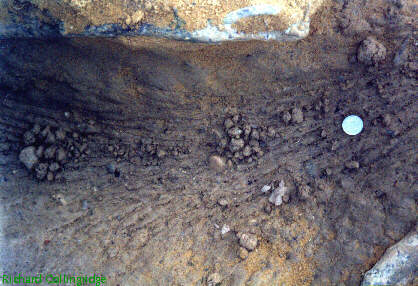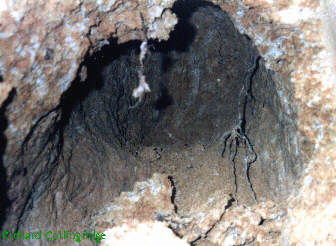Conservation
Information
Contact:
E-mail:
contact@collingridge.net with "contact" in the subject line.
Phone:
+44 (0)1425 475071
Mobile:
+44 (0)7790 677163
Client: Land Management Services, landscape consultants to owners. Contact: admin@landmanagementservices.co.uk; phone +44 (0)1737 221117; fax 224206.
Brief: To establish constraints on planned extension to clay pit due to badgers.
The badger Meles meles is protected by law in Britain from direct harm and also from disturbance to its setts (burrows). A clay pit in Hertfordshire is used to supply the adjacent brickworks. Planning permission to extend the pit had existed for some time, but during preparations for the new excavation it appeared that badgers from a nearby sett had colonised this area. Work was stopped and we were called in.
We surveyed the area for badger activity. We found many rabbit Oryctolagus cunniculus burrows (much smaller than badger setts). However, there were also several holes which were large enough for badgers. From their appearance and the lack of large spoil heaps we considered that these were rabbit holes enlarged by badgers hunting the rabbits - there is a very active badger sett on another part of the site.
Scratches made by
badgers enlarging rabbit hole (coin is 2cm across)
To rule out the possibility that the new holes were now being used as setts by the badgers, damp sand was sprinkled around them, and examined several days later. This revealed rabbit prints in the holes, and badger prints around the hole entrances but not in the holes themselves.
To prevent the badgers moving in before excavation began, these enlarged rabbit holes were then dug out by machine under our close supervision - this approach was agreed with English Nature. Digging proceeded cautiously, checking repeatedly for signs of badgers. As we expected, the holes were empty of badgers -- and it seems that the badgers had also eaten all the rabbits.

Digging in progress

The end of an enlarged rabbit burrow - rabbits all eaten. Notice badger claw marks on left and short un-widened section at far end where the rabbit was hiding.